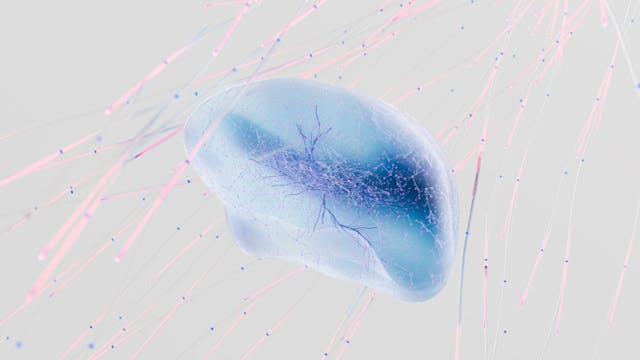Welcome to GertieBlu, where we explore the wonders of the modern world and dive deep into the technologies shaping our future. Today’s topic is Artificial Intelligence, or AI, a buzzword you’ve likely heard in everything from news headlines to coffee shop conversations. But what exactly is AI, and how does it impact our lives today? Is AI more than just an algorithm, and will it ultimately change the way we live and work? Let’s unpack these questions.
AI: More Than Just an Algorithm
At its core, Artificial Intelligence refers to machines designed to simulate human intelligence. This includes everything from recognizing speech and images to making decisions and predictions based on data. While algorithms—those step-by-step instructions for solving problems—are part of AI, the field encompasses far more. AI systems are built to learn, adapt, and improve over time, enabling them to go beyond simple calculations to perform tasks we traditionally associate with human intelligence.
There are two key types of AI that help explain how far the technology can go: Weak AI and Strong AI.
Weak AI vs. Strong AI
Weak AI (also known as Narrow AI) refers to systems that are designed to perform a narrow range of tasks. These are the AI technologies we use every day, like Siri or Google Assistant, which can recognize your voice and respond to specific commands. Weak AI excels in focused areas, like recommending movies or automating customer service, but it doesn’t possess general intelligence or consciousness. In other words, it’s not “thinking” in the way a human does.
On the other hand, Strong AI refers to systems that could eventually perform any intellectual task a human can do. This is the type of AI that still exists in the realm of science fiction. Strong AI, also called Artificial General Intelligence (AGI), would be able to reason, plan, learn, and even be self-aware. While we haven’t yet created Strong AI, it’s the ultimate goal for some researchers, and the implications of reaching this level are both exciting and daunting.
Machine Learning and Deep Learning: The Building Blocks
Most of the AI you encounter today relies on Machine Learning (ML). ML is a subset of AI where machines learn from data. Instead of being explicitly programmed to perform tasks, ML systems analyze data, identify patterns, and make decisions with minimal human intervention. Think of it as teaching a machine by feeding it examples until it learns to make predictions on its own.
One of the most powerful branches of Machine Learning is Deep Learning. This technique mimics the structure of the human brain through layers of artificial neural networks. These networks are capable of recognizing complex patterns in vast datasets, enabling advancements in areas like image recognition and natural language processing. Deep learning powers the technology behind facial recognition software, self-driving cars, and even medical diagnostics.
Natural Language Processing (NLP): Making Machines Understand Us
Natural Language Processing (NLP) is a fascinating AI subfield that focuses on helping machines understand, interpret, and generate human language. This is the technology behind chatbots, translation services, and voice-activated systems like Alexa or Google Home. NLP allows machines to comprehend the nuances of language, such as context and sentiment, which is vital for interacting with humans more naturally.
AI in Robotics
One of the most visible applications of AI is in robotics. AI-powered robots can perform tasks that require perception, manipulation, and physical interaction with their environment. From industrial robots that assemble cars to humanoid robots that assist in healthcare, the combination of AI and robotics is transforming industries. While early robots followed predefined paths, modern AI enables robots to learn from their environment, make decisions in real-time, and even work alongside humans in collaborative settings.

Reinforcement Learning: Learning by Doing
Reinforcement Learning (RL) is another fascinating subset of AI. In this approach, an AI system learns by interacting with its environment and receiving feedback in the form of rewards or punishments. The machine learns by trial and error, improving its actions over time to achieve specific goals. RL has been the driving force behind AI beating humans in complex games like chess, Go, and even video games like StarCraft. It’s also being used in autonomous systems, such as robots and self-driving cars, where the AI needs to learn from experience to navigate the physical world.
Generative AI: Creating Something New
One of the most exciting recent advancements in AI is Generative AI. As the name suggests, this involves systems that can generate new content, whether it’s text, images, music, or even video. Technologies like GPT-4 are examples of generative AI. These systems are trained on large datasets and can produce original content that mimics human creativity. Generative AI is already being used in industries ranging from entertainment to marketing, where it can create everything from movie scripts to personalized advertisements.
How Will Society Benefit from AI?
AI has the potential to revolutionize society in countless ways. In healthcare, AI is already helping doctors diagnose diseases more accurately and develop personalized treatment plans. In education, it can provide personalized learning experiences, helping students learn at their own pace. In business, AI is automating routine tasks, improving efficiency, and enabling companies to make data-driven decisions. AI can also help address global challenges, like climate change, by analyzing vast datasets to predict environmental trends and optimize resource management.
Is My Job Safe?
One of the most common concerns about AI is the impact it will have on jobs. It’s true that AI will automate many tasks, especially repetitive, manual, or data-driven jobs. However, history shows us that while technology eliminates some jobs, it often creates new ones as well. AI is likely to reshape the job market rather than destroy it. Skills related to AI development, machine learning, and data science will be in high demand. Additionally, roles that require creativity, emotional intelligence, and complex problem-solving are less likely to be automated.
For those in industries heavily impacted by automation, reskilling and adapting to new roles in an AI-driven economy will be essential. While some jobs may disappear, others will emerge in areas we can’t even imagine yet. The key will be to stay flexible and embrace lifelong learning.
What Does the Future Hold?
Over the next few decades, we can expect AI to become even more integrated into our daily lives. The future holds the potential for:
- Stronger AI systems capable of handling more complex and creative tasks
- Self-driving vehicles becoming mainstream, revolutionizing transportation
- AI assistants capable of performing increasingly sophisticated tasks, from scheduling our appointments to managing our finances
- Advances in healthcare, with AI systems helping to detect diseases earlier, develop treatments faster, and even assist in surgeries
- AI in education, enabling personalized learning environments where students can learn in ways best suited to them
However, there are also ethical considerations that will need to be addressed, such as bias in AI systems, the concentration of AI power in the hands of a few large companies, and the potential for misuse of AI technologies.

Final Thoughts: A Future Shaped by AI
AI is more than just an algorithm—it’s a transformative force that has the potential to change nearly every aspect of our lives. From healthcare to entertainment, AI will continue to grow in importance, creating new opportunities and challenges along the way. While AI will undoubtedly change the job market, it’s not necessarily something to fear. By staying informed, embracing change, and adapting to new roles, we can all thrive in a future shaped by AI.
At GertieBlu, we’ll be keeping a close eye on how AI evolves and impacts our world, so stay tuned for more insights into this exciting field.









